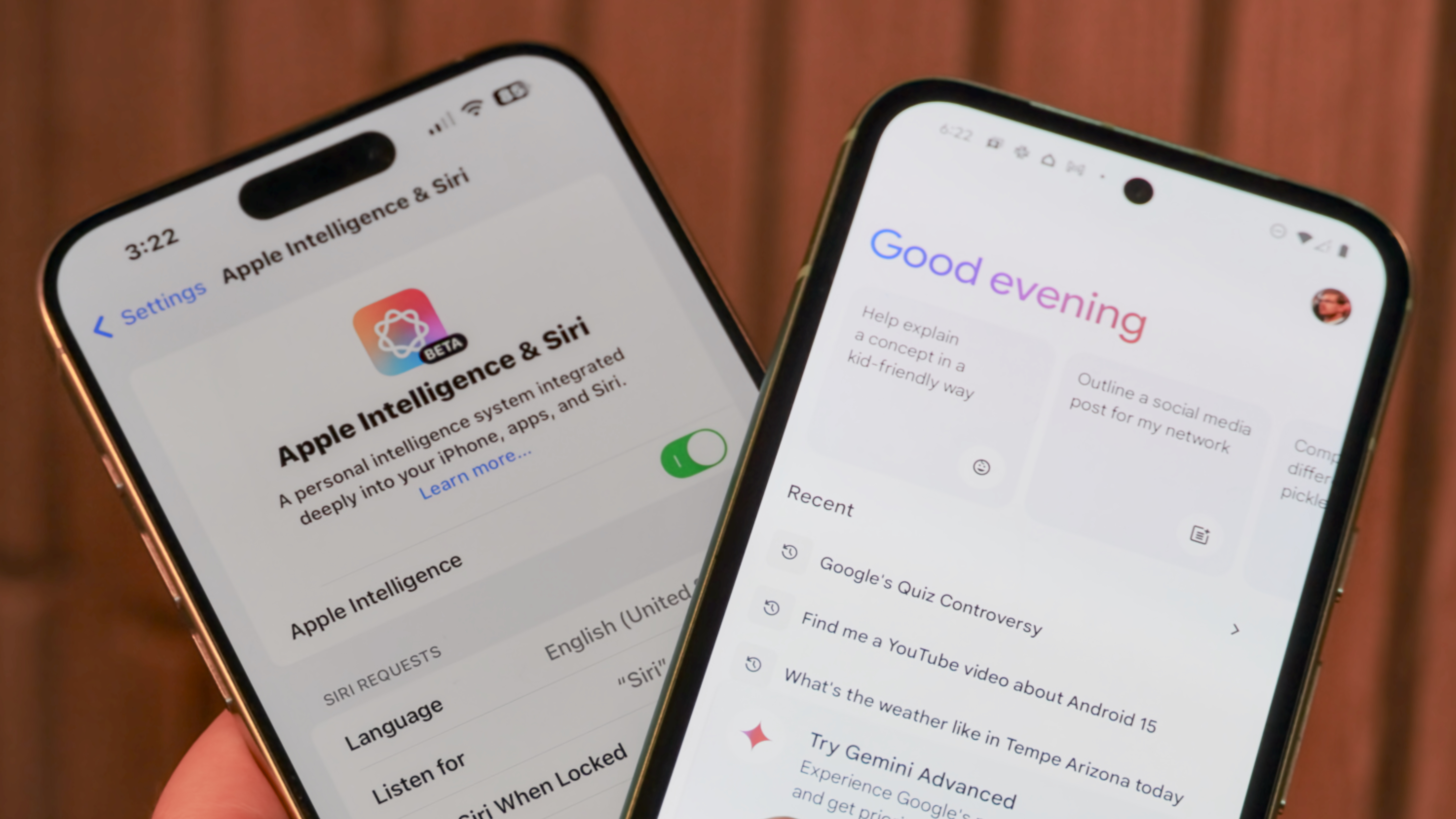Fitbit Ace LTE vs. Fitbit Ace 3
The Fitbit Ace LTE has cellular connectivity, a step-up from the last model, the Fitbit Ace 3.
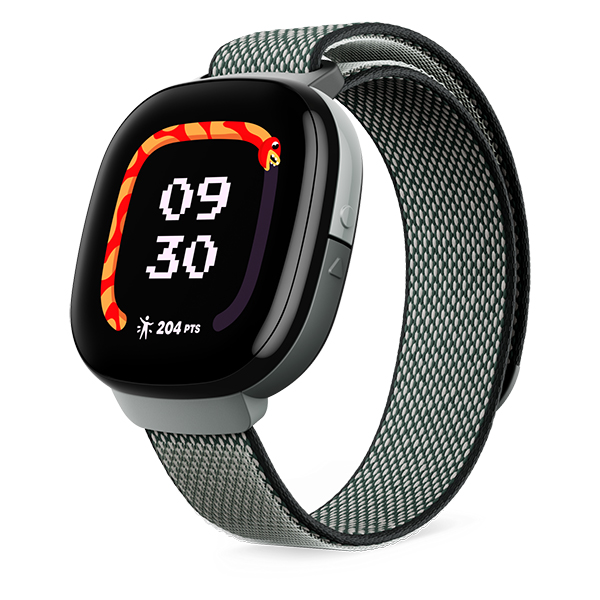
A phone alternative
If your child is too young for their own cell phone but you still want them to be able to contact you to check in or in case of emergency, the Fitbit Ace LTE is a good option. It isn’t the first kids’ GPS and cellular watch, but it’s the first from Fitbit. And it offers some compelling features. But the subscription requirement, access to on-wrist games, and lack of sleep tracking might make you think twice.
Pros
- Comes with cellular connectivity
- Includes GPS location tracking
- Charges quickly
- Gamifies fitness to get kids moving
Cons
- Requires a recurring monthly fee
- Not needed if they have a phone
- No sleep tracking
- Significantly shorter battery life
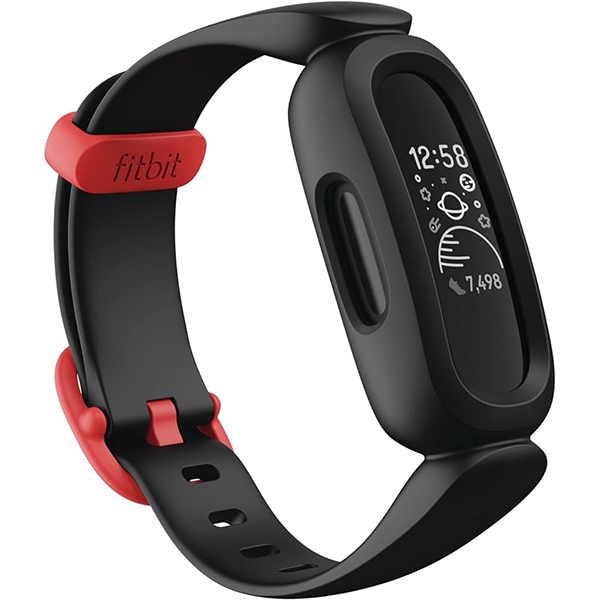
A kids’ starter tracker
The Fitbit Ace 3 is a simple device designed for younger kids that can track their activity and sleep while letting them personalize on-screen characters, get reminders to move, and more. It’s limited in functionality but for some parents (and kids), that’s all you want. At its current price, it’s a great tracker to test the waters before diving into something more feature rich.
Pros
- No subscription required
- Detailed sleep tracking
- Simpler band design
- Great battery life
Cons
- Limited functionality
- Older model in need of a refresh
- No connectivity without a phone
There comes a time when kids get older and need some autonomy. When this is the case, you might be mulling over getting them a cell phone. However, many parents prefer not to get their kids cell phones at an early age. The new Fitbit Ace LTE is an interesting in-between device, a kids's smartwatch with, as the name implies, LTE cellular connectivity.
While both the Fitbit Ace LTE vs. Fitbit Ace 3, the brand's last kids' activity tracker, might bear the same name and be for kids of around the same age, they are very different devices.
The Fitbit Ace LTE's subscription-based connectivity could be a viable compromise you want for kids who need more autonomy or parents who want some peace of mind. But do you need it? Let’s examine how these two wrist-worn devices work to help you make the right decision for your little one.
Fitbit Ace LTE vs. Fitbit Ace 3: How they look
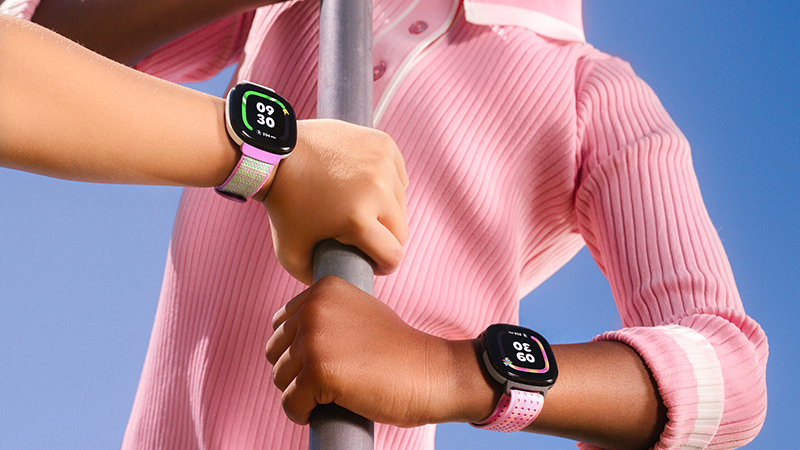
First, let’s consider the looks. The Fitbit Ace LTE comes in Spicy Pebble with a Moovin’ Band or Mild Pebble with a Strange Arcade band (other bands are available separately and interchangeable with the originals). Made of plastic, stainless steel, and glass, the device has a square smartwatch-style face that incorporates recycled materials. It is designed to be scratch, bump, and water-resistant. The band is made from recycled polyester yarn while the clasp and lugs are plastic and silicone.
Compatible with most phones running Android 11 or newer as well as iOS 15 or newer, the Fitbit Ace LTE has a scratch-resistant Corning Gorilla Glass 3 Color OLED screen. It’s water-resistant to 50 meters via the 5ATM rating so kids can wear it underwater, in the bath, while playing outside in the rain, you name it. The watch even comes with a protective bumper case for especially clumsy kids.
Offering up to 16 hours of battery life, this is mostly affected by cellular connectivity and GPS tracking, which I’ll discuss in more detail in the next section. So, keep in mind that you need to recharge this tracker daily. It does, however, quick charge to 60 percent, or about 11 hours worth of battery life, in just 30 minutes, or to full in just over an hour.

Also designed for kids aged six to seven and older, the Fitbit Ace 3 comes in Black and Sport Red or Cosmic Blue and Astro Green with two buttons on the side. Employing a thin and rectangular activity tracker design, it comes with a silicone band with an adjustable plastic clasp. There are Fitbit branded and third-party band options you can swap in, including Fitbit’s licensed Minions character bands.
Get the latest news from Android Central, your trusted companion in the world of Android
I reviewed the Fitbit Ace 3 when it was released and love how easy it is to pop the tracker out of the band and swap it with another. Even if you keep the same band, though, you’ll want to remove it and clean around the underside of the band to prevent skin irritation.
Equipped with a PMOLED touch-sensitive display, it also meets a 5ATM rating for use in and around water. It’s compatible with Android 10 or higher and Apple iOS 15 or higher devices.
Battery life is a big differentiator here since this watch can run for up to eight days per charge, though it takes about two hours to fully charge to 100 percent. This is because the Fitbit Ace 3 doesn’t connect to anything beyond a phone or other device via Bluetooth.
Fitbit Ace LTE vs. Fitbit Ace 3: The specs
Before diving into the core features of these two fitness trackers for kids, let’s see how the specs compare.
| Header Cell - Column 0 | Fitbit Ace LTE | Fitbit Ace 3 |
|---|---|---|
| Colors | Spicy Pebble/Moovin' Band, Mild Pebble/Strange Arcade Band | Black/Sport Red, Cosmic Blue/Astro Green |
| Swappable Band | Yes (new one included annually with plan) | Yes |
| Battery Life | Up to 16 Hours | Up to 8 Days |
| Heart Rate Monitoring | Yes | Yes (but deactivated) |
| GPS | Built-in | No |
| Sleep Monitoring | No | Yes |
| Water Resistance | 5ATM | 5ATM |
| Phone Notifications | Yes | Yes |
| Screen Type | Color PMOLED Touchscreen | Monochrome OLED Touchscreen |
| Screen Resolution | 333 ppi | 240 x 240 |
| Connectivity | 4G LTE, Wi-Fi, Bluetooth 5.0, NFC, GPS | Bluetooth |
| Games | Yes | No |
| Sensors | Accelerometer, optical heart rate sensor (activated), altimeter, magnometer, ambient light sensor, gyroscrope | Accelerometer, vibration motor, optical heart rate sensor (deactivated) |
| Built-in Speaker | Yes | No |
| Built-in Mic | Yes | No |
As you can see, while the names of these two activity trackers for kids are similar, there is a lot more than meets the eye to the Fitbit Ace LTE.
Fitbit Ace LTE vs. Fitbit Ace 3: What kids can do with them
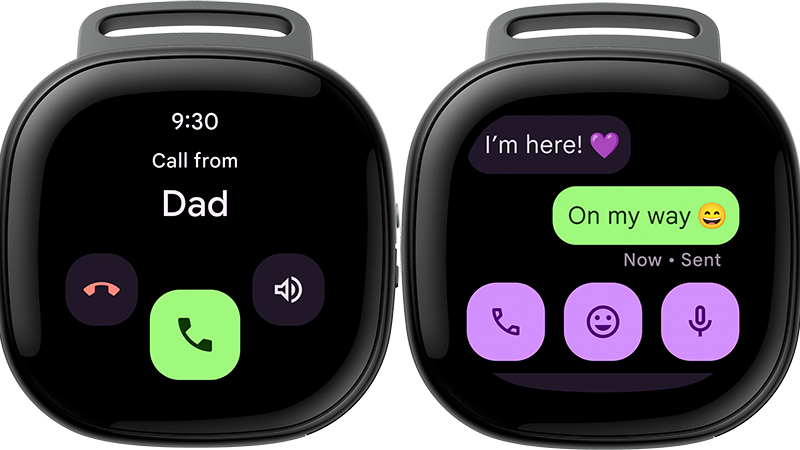
The Fitbit Ace LTE is not your standard wrist-worn step tracker for kids. It takes the experience much further. It includes built-in 4G LTE cellular connectivity via an included SIM card. This also means there’s a monthly subscription fee. At the time of this writing, it’s $9.99/mo. or $120/yr. and includes the ability for kids to call, message, and share location.
A purchase of the plan (the watch doesn't make much sense without one) also includes an Ace Band, with a new band at every annual renewal period. Six fun bands are available at launch, and there will likely be more down the line. The plan is on for half price through August 31, 2024.
Once set up and activated, your kids can use the Fitbit Ace LTE along with its built-in microphone and speaker to call and message up to 20 contacts. This can include trusted individuals like parents and caregivers, grandparents, close friends, and other family members.
The smartwatch also features GPS location tracking with advanced location technology powered by Google. Keep an eye on where your child is in real-time and ensure they aren’t leaving the school premises, for example, or keep track of older kids as they walk home alone from school or a friend’s house. Google says only parents or caregivers can see the location data, which is automatically deleted after a short time.
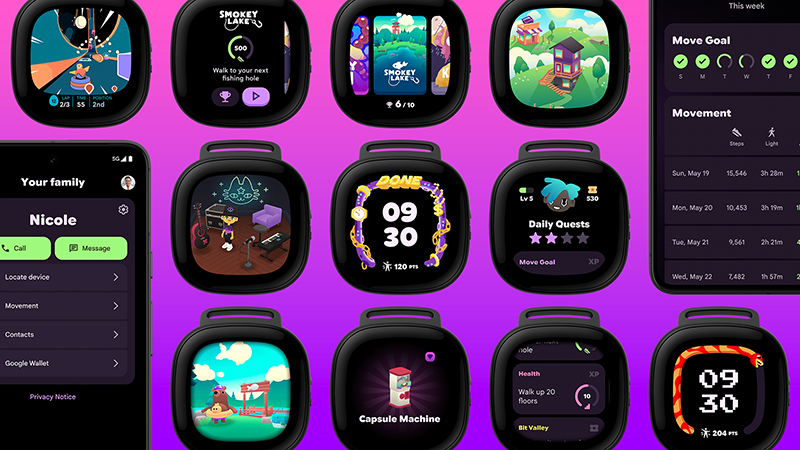
Additionally, kids can play interactive 3D games in the Fitbit Arcade that use haptics, sounds, and the accelerometer. Think games that see them racing through space or going fishing; new games will be added every few months. While gaming from the wrist might sound like a distraction, gameplay is intentionally spaced out, rewarding kids only when they participate in active play in the real world. Essentially, the more the child moves in real life, the more game segments they can unlock in a virtual one. The School Time option, meanwhile, limits gameplay during school hours.
Further encouraging physical activity is a Noodle activity ring that appears on the watch’s home screen, recording their movement throughout each day. There’s a fun animation each time they reach a Move Goal, which can be achieved by walking, jumping, or even spinning in circles! The goal is to encourage kids to get at least an hour of physically active time per day, in line with the recommendations from the World Health Organization.
Tying everything together is Eejie, a virtual character who lives in the virtual Bit Valley world on the watch. Fitbit’s reimagining of the Tamagotchi, kids keep Eejie happy by meeting their daily move goals. The more they move, the more items they earn for Eejie, like a ping pong table for its room or a skateboard for it to ride. Kids can connect with their friends’ Eejies to visit them in other parts of Bit Valley as well.
With Tap to Pay coming soon, older kids can leverage the built-in NFC sensor and use the watch to pay for items from compatible terminals, like at the convenience store or fast-food restaurant during lunch at school. All they need is a payment card loaded to the account. It’s a great way to teach older kids about the importance of saving and give them some independence to occasionally spend, too. Parents can set controls and receive real-time notifications whenever a child spends money.
The Fitbit Ace LTE also has basic functions like an alarm clock, daily goals settings, and rewards. Kids get expected activity tracking along with an optical heart rate sensor. One glaring omission, however, is sleep tracking. This is presumably because daily charging and the always-on connectivity mean kids have to recharge overnight. But it’s an important feature that many parents might not be willing to forego.
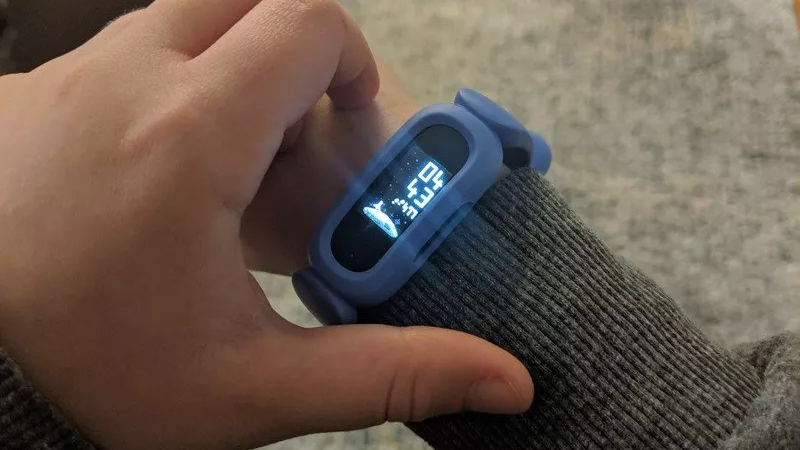
How does the Fitbit Ace 3 compare? It’s very different. Introduced years ago in March 2021, the Fitbit Ace 3 offers the same reliable sleep tracking you get with other Fitbit devices, advising if your kids are getting enough sleep and good quality sleep, and when they go to bed and rise. Kids (and parents) can use the Fitbit app to schedule bedtime reminders and set silent alarms that wake kids up gently with a light buzzing on their wrists.
Parents can see if kids go to sleep when they say they do, how restless they are at night and their overall sleep patterns. Beyond just satisfying curiosity, this could suggest patterns, like that your child tends to be temperamental on nights when they don’t get good quality sleep or wake up groggy when they go to bed after a certain hour. Since you can see a full history in the app, it’s a useful feature and a shame it isn’t in the Fitbit Ace LTE as well.
The Fitbit Ace 3 activity tracker monitors kids’ daily movements as well with on-wrist reminders to move or for them to get up and stretch if they have been sitting too long. Along with basic steps, it also tracks Active Minutes. This presumably uses the built-in heart rate sensor to measure, though the app does not display heart rate data for kids. Kids can receive messages on the watch (they can’t reply to them) but only when it’s paired with a nearby connected and compatible smartphone.
There’s nothing as interactive as eejie with the Fitbit Ace LTE, but there are virtual badges, animated clock faces with characters like a rocket, bunny, or even Minions, and personalized avatars kids can enjoy. It’s on a much more rudimentary level on the much smaller screen. I do love the celebratory messages, however, when kids achieve goals along with virtual badges they can collect and view them in the app.
Other simple features in the Fitbit Ace 3 include a timer and stopwatch for racing with friends or timing chores. Kids can also see their stats on their wrists as they move throughout the day.
Fitbit Ace LTE vs. Fitbit Ace 3: Which should you buy?
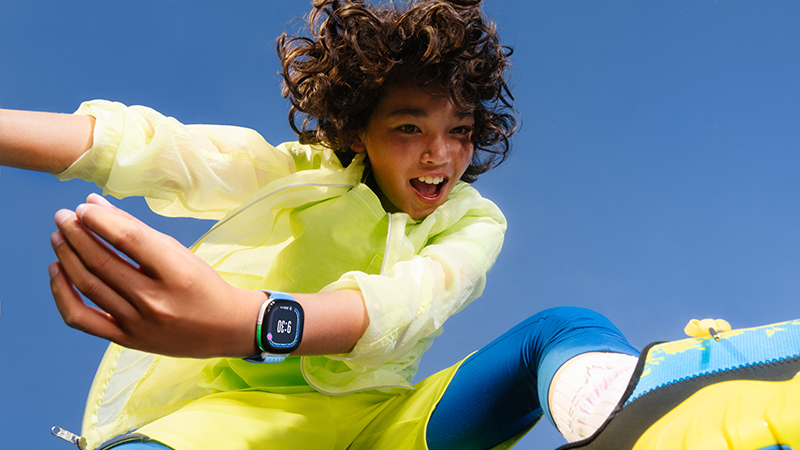
It’s a complicated decision between the Fitbit Ace LTE vs. the Fitbit Ace 3. While the Fitbit Ace LTE offers a compelling proposition, it has a bit of an identity crisis. Some of the features, like NFC and GPS location tracking, are better suited to older kids with more autonomy, like teens and tweens. Other features, meanwhile, like games, are better suited to younger kids. So, who would want this watch?
The Fitbit Ace LTE is ideal for kids in the age 8-13 range who might not yet be old enough for a cell phone but are ready for a bit of independence. Some kids between these ages, for example, are allowed to walk home from school alone, go to the local park, leave school on lunch, or play with friends outside. The Fitbit Ace LTE would provide peace of mind.
But then, why not just get them a cell phone with a plan? There is a cost-benefit: even with a monthly plan, the Fitbit Ace LTE is still nowhere near what even the cheapest phone and plan would cost. Plus, the child doesn’t have to bring along a phone, easily staying in touch from the watch right on their wrist.
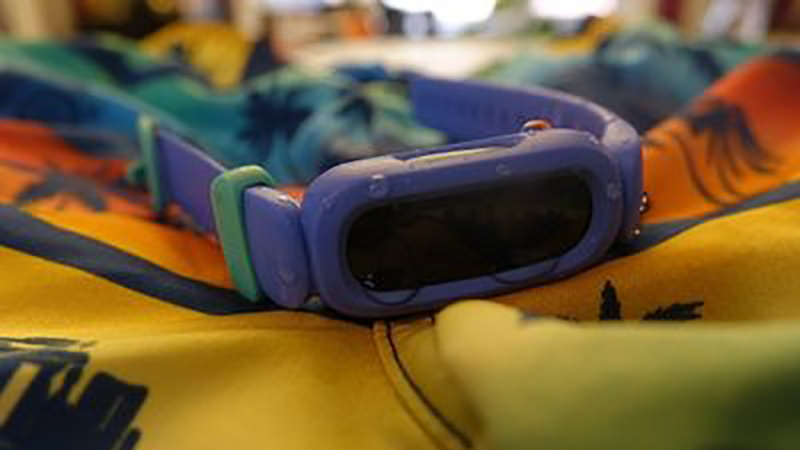
For younger kids aged 6-10, the Fitbit Ace 3 is still a good option. It’s ultra-affordable and simple. While it doesn’t have games, per se, there are simple gamification features that young kids will love. They are engaging, not distracting. The battery life of more than a week and the detailed sleep tracking are the two biggest pluses of this tracker.
Bottom line: for older kids who aren’t yet ready for a cell phone, consider the Fitbit Ace LTE. It gives kids autonomy and parents peace of mind. But when you start getting into the teen years, chances are they’ll want something more substantial in a smartwatch, not to mention a phone!
For younger kids, stick with the Fitbit Ace 3. While having LTE connectivity for emergencies is great, the monthly cost adds up. Alternatively, consider placing a Bluetooth device tracker in their backpack or pocket, like the Samsung Galaxy SmartTag2 or any of the best Bluetooth trackers. You might find that these satisfy your need for GPS location tracking at the very least. If you’re interested in what else is out there beyond these two, see our picks for the best kids’ fitness trackers.

A connected kid
If you want your kid to be connected for emergency purposes and show some responsibility but don’t yet want to invest in a smartphone and plan, the Fitbit Ace LTE is a good transitional device. While it requires a monthly plan, the device nor the plan costs anything close to a smartphone and plan. Plus, it helps encourage kids to get moving more and have fun while doing it.

Simple yet fun
The Fitbit Ace 3 is several years old now and due for a refresh. But as a simple activity tracker for younger kids, it has useful features like move reminders, active minutes, and detailed sleep tracking, all of which parents can monitor from the parent view of the app. It’s a basic but also fun and useful wristwatch that kids will feel important wearing.

Christine Persaud has been writing about tech since long before the smartphone was even a "thing." When she isn't writing, she's working on her latest fitness program, binging a new TV series, tinkering with tech gadgets she's reviewing, or spending time with family and friends. A self-professed TV nerd, lover of red wine, and passionate home cook, she's immersed in tech in every facet of her life. Follow her at @christineTechCA.
You must confirm your public display name before commenting
Please logout and then login again, you will then be prompted to enter your display name.
